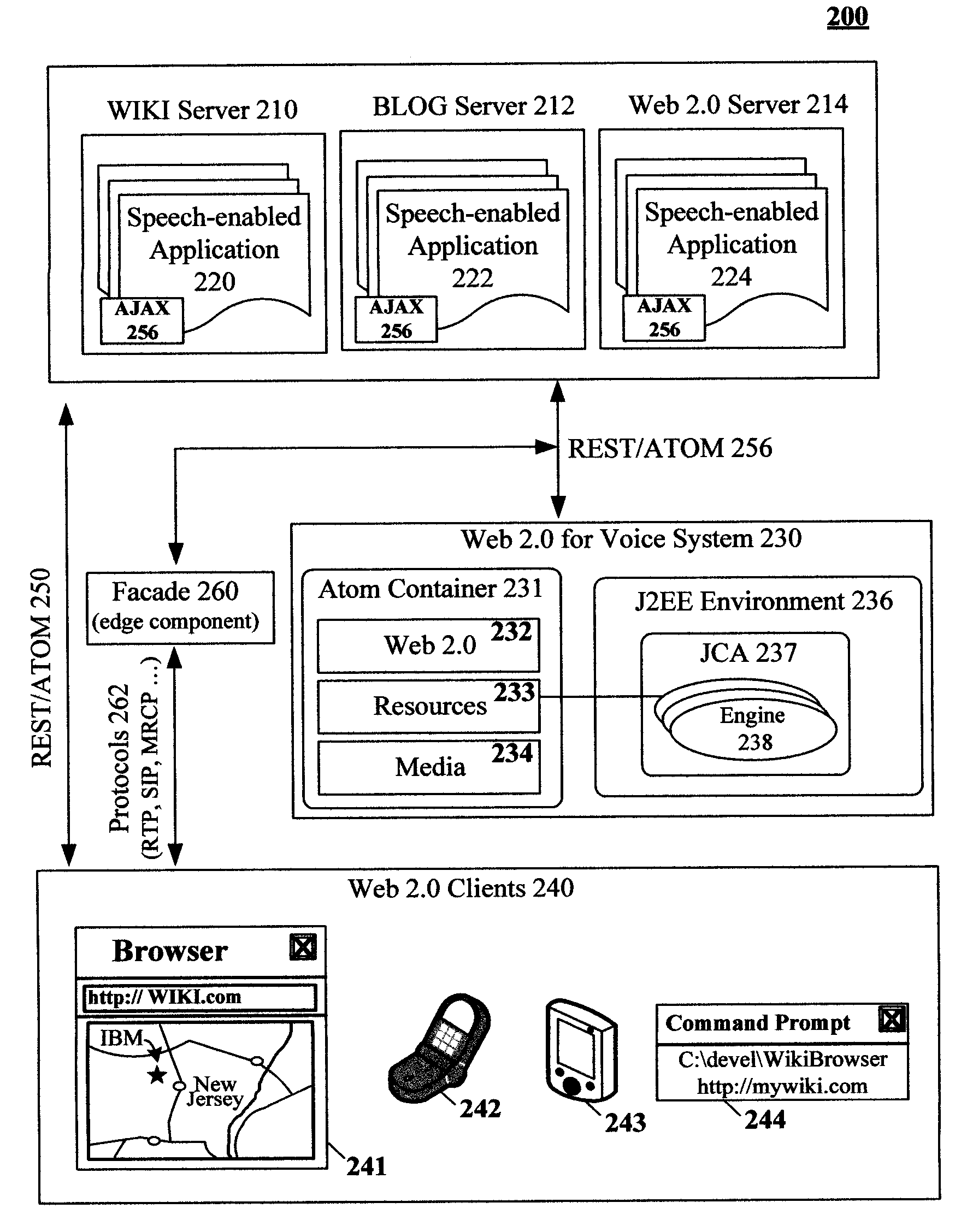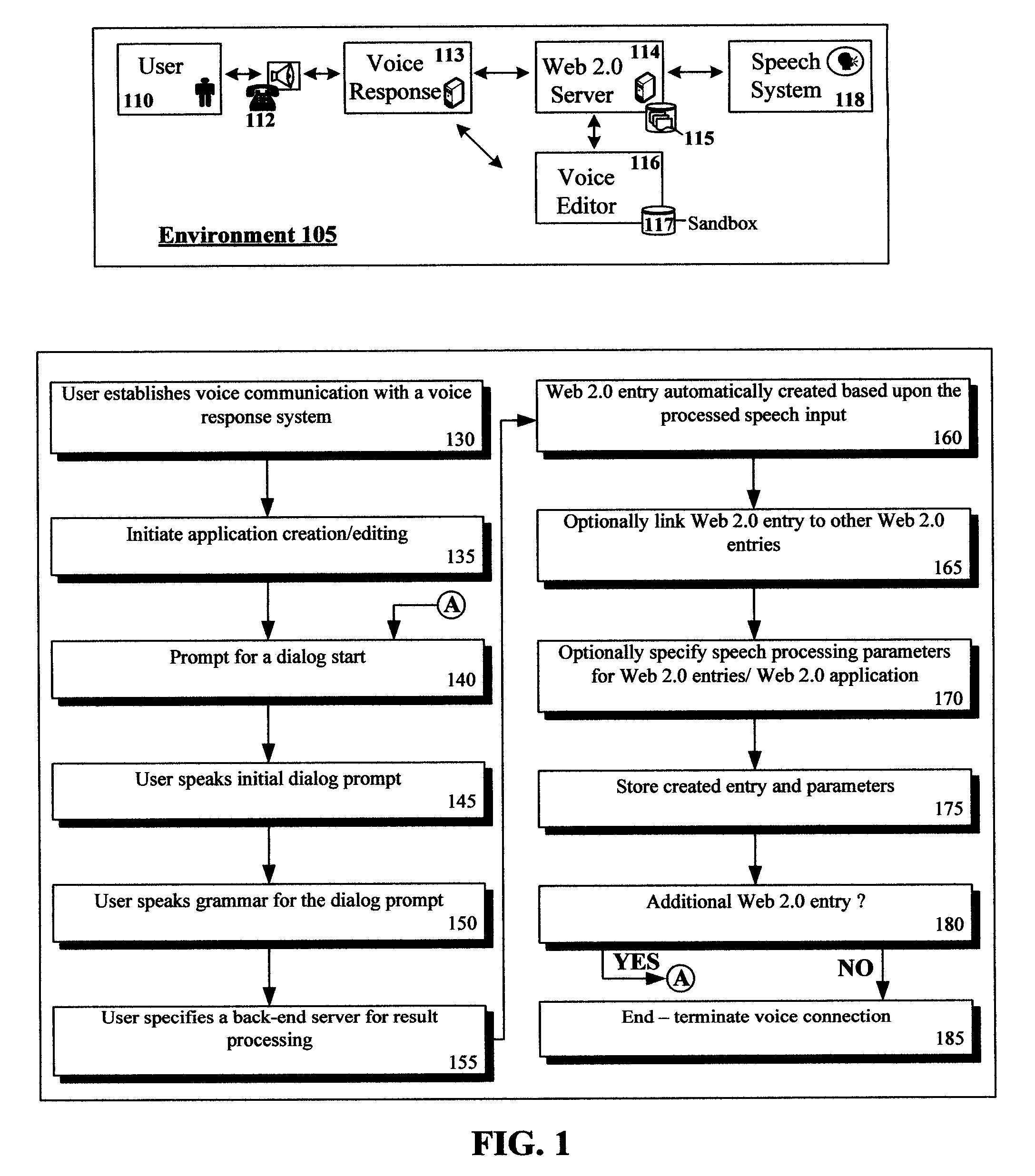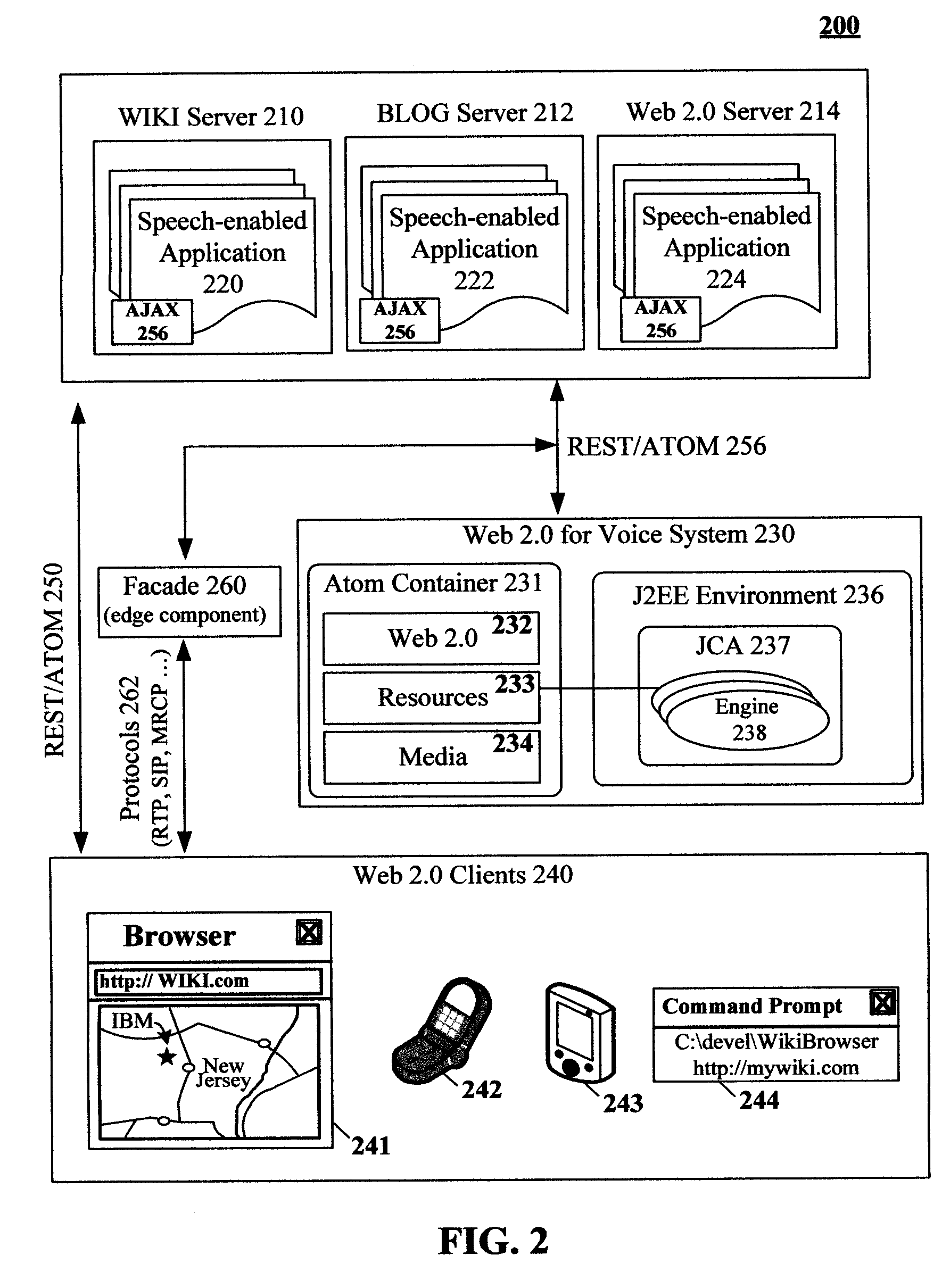Creating and editing web 2.0 entries including voice enabled ones using a voice only interface
a voice only, web 2.0 technology, applied in the direction of transmission, program control, instruments, etc., can solve the problems of limiting the interactive options of sighted users, and affecting the use of web 2.0 applications
- Summary
- Abstract
- Description
- Claims
- Application Information
AI Technical Summary
Benefits of technology
Problems solved by technology
Method used
Image
Examples
Embodiment Construction
[0019]FIG. 1 is a flow diagram illustrating a voice only interface 112 for creating and editing Web 2.0 applications in accordance with an embodiment of the inventive arrangements disclosed herein. In illustrated environment 105, an end-user 110 can use the voice only interface 112 to interact with a voice response system 113, which is linked to a Web 2.0 server 114 and a voice editor 116. The voice editor 116 can create Web 2.0 applications 115, which can be speech-enabled applications. The voice editor 116 can include an optional sandbox 117, which can be an isolated computing space within which users 110 can create / edit / test applications 115 in a non-published or non-live computing space. Applications 115 created and / or edited by the voice editor 116 can be stored in a data store accessible by the Web 2.0 server 114. The Web 2.0 server 114 can then serve the applications 114 to clients. Speech engines of speech system 118 can be utilized to perform speech processing tasks for spe...
PUM
 Login to View More
Login to View More Abstract
Description
Claims
Application Information
 Login to View More
Login to View More - R&D
- Intellectual Property
- Life Sciences
- Materials
- Tech Scout
- Unparalleled Data Quality
- Higher Quality Content
- 60% Fewer Hallucinations
Browse by: Latest US Patents, China's latest patents, Technical Efficacy Thesaurus, Application Domain, Technology Topic, Popular Technical Reports.
© 2025 PatSnap. All rights reserved.Legal|Privacy policy|Modern Slavery Act Transparency Statement|Sitemap|About US| Contact US: help@patsnap.com



